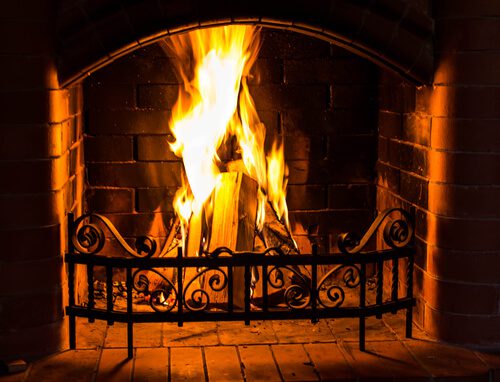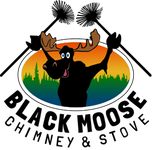 Spring may mean the end of winter, but it doesn’t always mean the end of the fire-burning season. Many homeowners continue to use their fire appliances and chimneys throughout spring to avoid cranking up the air conditioning unit too early. This saves money but may increase the risk of flue fire. It’s important to use your fireplace, stove, or insert properly, and to pay attention to signs of a problem. In addition, it’s important to schedule routine chimney maintenance, recommended by both the Chimney Safety Institute of America (CSIA and the National Fire Protection Association (NFPA).
Spring may mean the end of winter, but it doesn’t always mean the end of the fire-burning season. Many homeowners continue to use their fire appliances and chimneys throughout spring to avoid cranking up the air conditioning unit too early. This saves money but may increase the risk of flue fire. It’s important to use your fireplace, stove, or insert properly, and to pay attention to signs of a problem. In addition, it’s important to schedule routine chimney maintenance, recommended by both the Chimney Safety Institute of America (CSIA and the National Fire Protection Association (NFPA).
Common Late-Season Fires
Flue fires are more common during the late season for a couple of reasons. First, the fireplace and chimney have been working all season long. That’s five or six months of fires burning, smoke venting up the chimney, and byproducts such as soot and creosote depositing on the interior of the chimney. After a full season of fires, your once-clean chimney is no longer clean. It’s also less efficient and homeowners are less vigilant about what they’re burning and how. Some homeowners may be tempted to use green or wet wood in their fireplace because their supply of seasoned firewood ran out. This is dangerous, especially this time of year. Not only is the chimney dirty and less efficient than in the fall, but burning improper wood or other materials actually makes it less so. When you’re burning fire during the spring, it’s important to make sure you burn proper wood and that you’re using your fireplace efficiently–not letting it smolder to control the temperature.
What You Can Do
You can check your fireplace and chimney for creosote buildup anytime. Simply reach into the chimney and scrape off a piece of creosote. If it is more than ⅛ of an inch in thickness, it’s time to call a chimney sweep. It may not seem like a lot of creosote, but it is enough to cause a serious problem for you. Creosote is highly flammable, and as it builds in the system, it is also more difficult to remove.
Other things you can do to prevent late-season fires is to burn only properly seasoned firewood all season long. This cuts down on creosote throughout burn season. Also, avoiding putting papers, trash, and cloth into the fire prevents unwanted sparks from rising into the flue and igniting creosote there. It’s also important to never burn pine needles, leaves, or pine cones in the fire. These light materials often rise up the chimney while ignited, causing a chimney fire or rising out of the chimney, igniting the roof or nearby shrubbery and debris.
If you burn a lot of firewood throughout burn season, you might consider having a New Year inspection or sweep so that your chimney system is not so dirty in the spring. This will keep your family and home safer throughout the year.
When It’s Time to Call A Professional
Are you afraid your chimney system is filled with creosote? Are your fires more difficult to light and smokier than before? Have you been burning the wrong wood in your fireplace this season? If you answered yes to any of these questions, you can call a professional today and get your chimney system checked out.
Schedule a chimney sweep with Black Moose by calling 603-525-7905.


